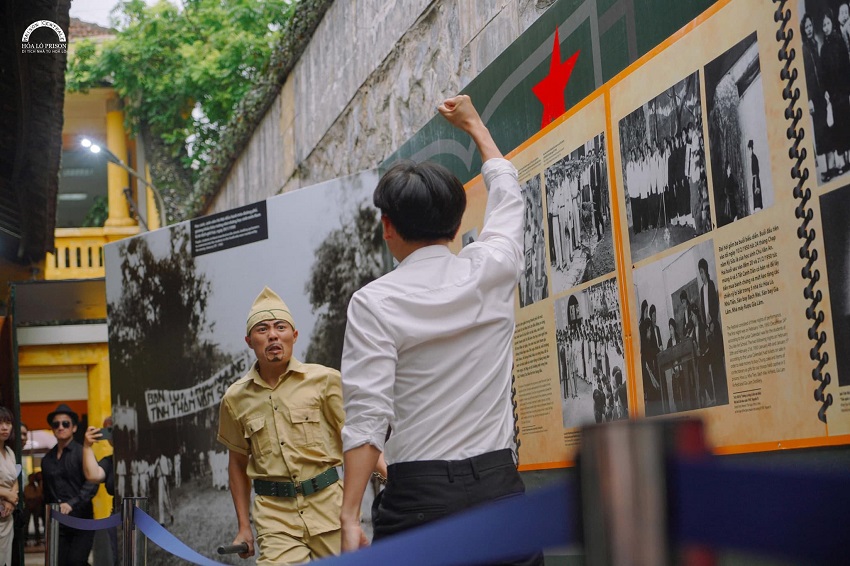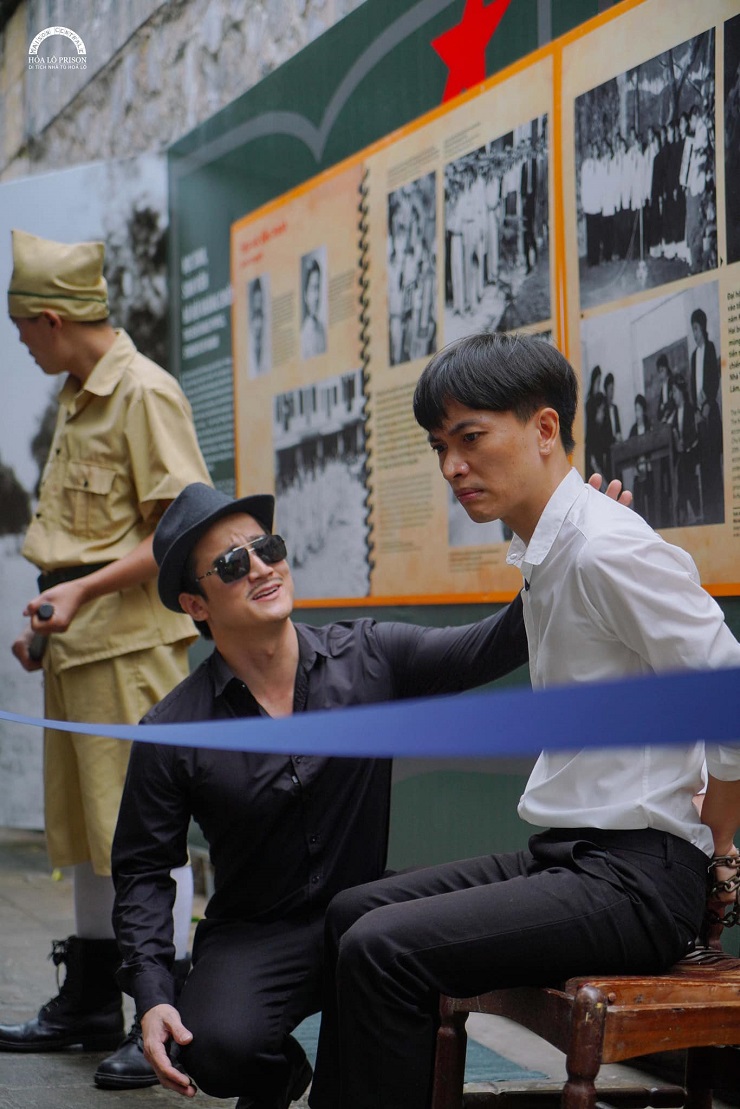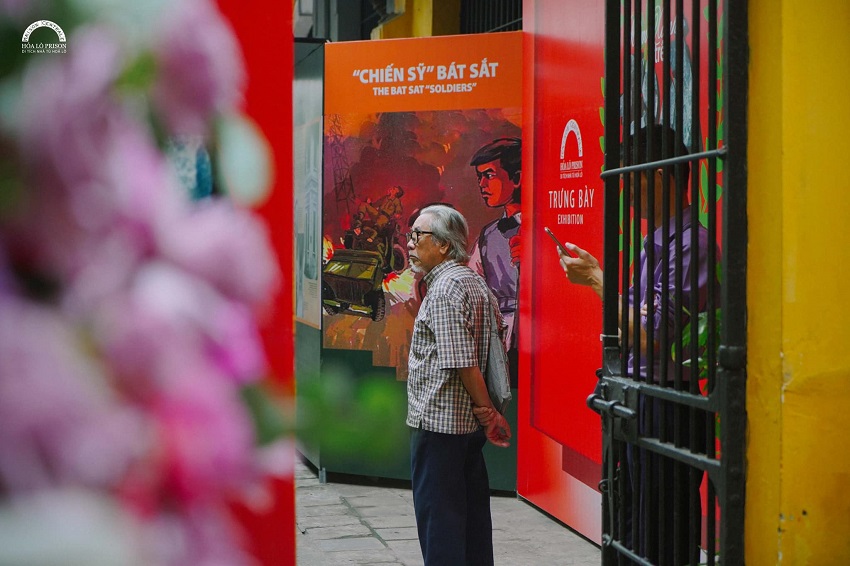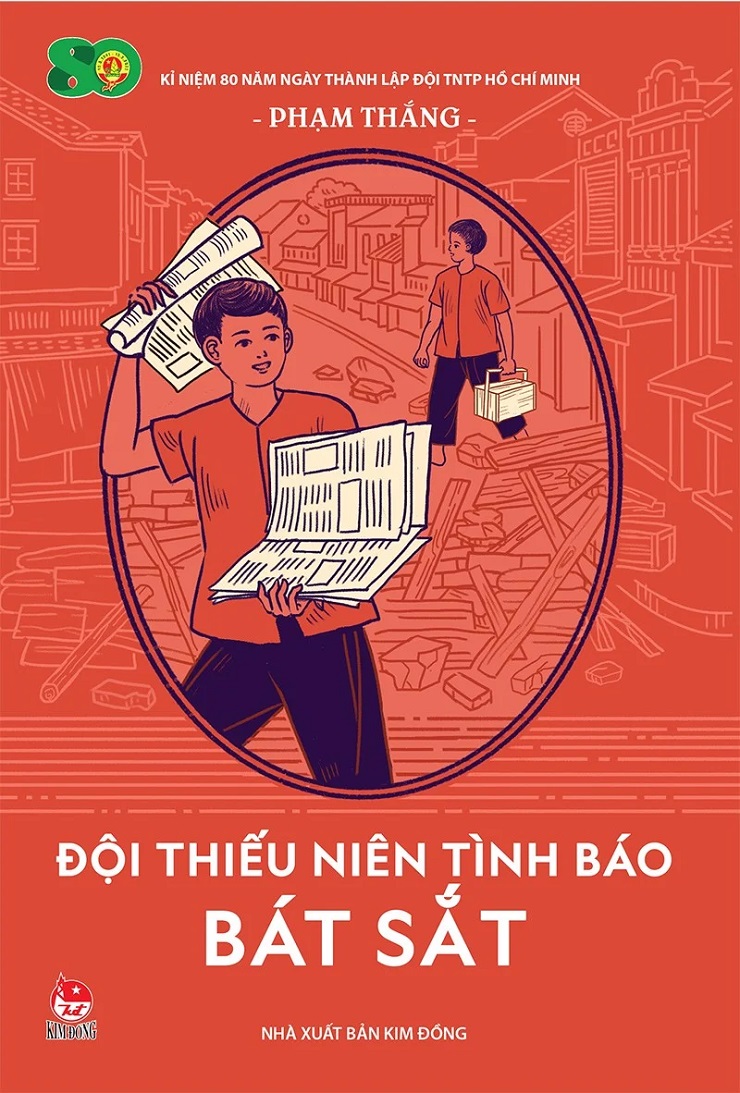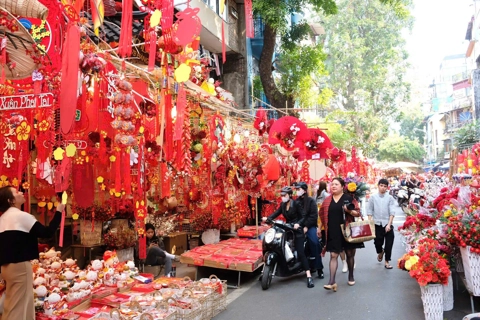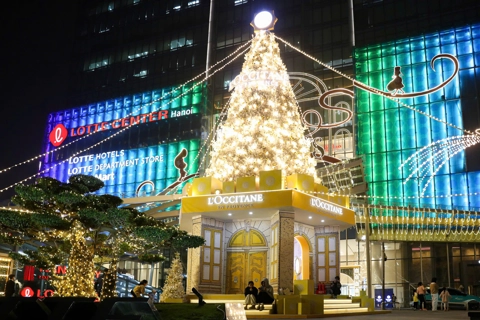Martyrs' tribute exhibition at Hoa Lo Prison relics site
The current photo exhibition aims to commemorate the 76th anniversary of Vietnam War Invalids and Martyrs Day (July 27, 1947 - 2023).
The thematic exhibition entitled "Green Sprouts on the Rocks" at the Hoa Lo Prison Relic Site will last until September 30.
The opening ceremony was held on July 20 with the participation of former revolutionary inmates of Hoa Lo Prison and veterans who fought the two brutal wars in Vietnam: the anti-French war (1945-1954) and the anti-American war (from 1954 to 1975).
| The opening ceremony of the thematic exhibition at the Hoa Lo Prison Relic Site was held on July 20. Photo courtesy of the Relic Site |
Gratitude to Vietnamese heroes and fallen soldiers
According to the organizers, the program expresses the present generation's gratitude to the heroes who sacrificed for the nation's independence and freedom. The exhibition also awakens national pride and educates Vietnam's younger generation in patriotic traditions.
At the exhibition's opening ceremony, visitors to Hoa Lo Prison had the opportunity to immerse themselves in a scene depicting some movements of Hanoi students during the anti-French resistance war in Hanoi in 1949-1950.
During this period, many Hanoian students secretly joined the patriotic movement, typically the Bat Sat Youth Intelligence Team.
The exhibition is divided into three parts: Youth in the Prion; The Flames in the Southern City; and Unforgettable Memories.
The "Youth in the Prion" exhibit features documents and images that tell the heart-wrenching stories of the brave teenagers of the Bat Sat Youth Intelligence Team, which was formed and operated from December 19, 1946 to mid-1948.
| A re-enactment depicting the patriotic movements of Hanoi students during the French Resistance War 1945-1954. Photo: Hoa Lo Prison Relic Site |
The Flames in the Southern City contains materials on the subject of the anti-American war in South Vietnam before 1975. At that time, patriotic students in the South were active in many anti-war movements, such as class strikes, demonstrations, and musical performances, calling for the nation's peace.
Meanwhile, "Unforgettable Memories" are images that evoke heroic moments of the Vietnamese army and people in two arduous wars, striving for reunification and territorial integrity for the country.
Hoa Lo Prison was built by French colonialists in 1886 and was considered one of the three most brutal of the colonial penitentiary system in Vietnam, along with Con Dao and Son La prisons. Many Vietnamese patriots were incarcerated and died in prison to fight for the country's independence, freedom, and peace.
The thematic exhibition is open to the public in the courtyard of the current Hoa Lo Prison Relic Site, located in Hoan Kiem District, Hanoi.
| The space of the exhibition. Photo: Hoa Lo Prison Relic Site |
Story about Hanoian “little spies”
The Bat Sat Youth Intelligence Team is considered the first army of young scouts in the history of Vietnam.
In 1947, when Hanoi was temporarily occupied by the French, some Vietnamese youth were trained to gather information in the area. From the original five members, a large intelligence team was formed in the heart of the capital.
These young heroes skillfully overcame all the dangerous enemy encirclement and successfully completed the assigned tasks. However, many of them were imprisoned in Hoa Lo prison by the French colonialists.
According to Pham Thang, author of the book "Teenage Intelligence Team" (Kim Dong Publishing House, Reprinted in 2021), the Bat Sat team accomplished many important tasks during its two years of service, including forming revolutionary bases among the families of Hanoian intellectuals, workers and students, searching for secret enemy information, showing the way for commanders, and others.
| The cover of the book “Teenage Intelligence Team”, Kim Dong Publishing House, Reprinted in 2021 |
On the night of February 19, 1946, five Bat Sat team members, including Tran Van, Tran Van Thuc, Tran Van Sam (Tran Van Thuc's younger brother), Pham Thang, and a boy named Chuc, bravely set out for Hanoi with only a small compass to guide them and a little food.
"Losing their way, the youths waded along the bumpy and slippery edges of the muddy rice fields. Sometimes the boys slipped and fell on a bed of morning glory. Another time, the oldest boy got stuck in a deep muddy field and lost his compass," Thang wrote in his book.
Later, recalling the historic night, Thang said: "We felt very honored to be able to do such a great task. But we were all children then, so we felt as excited as we were on an adventure."
"Of course, we were afraid from time to time, with childish fears of missing our compass, getting lost, or even of the devils."
The victories of the Bat Sat Youth Intelligence Team were later recounted by Pham Thang in a popular children's history book entitled "Teenage Intelligence Team", first published in 1976.
The book, which has been reprinted many times since then, is considered one of the most popular children's history books in Vietnam.

